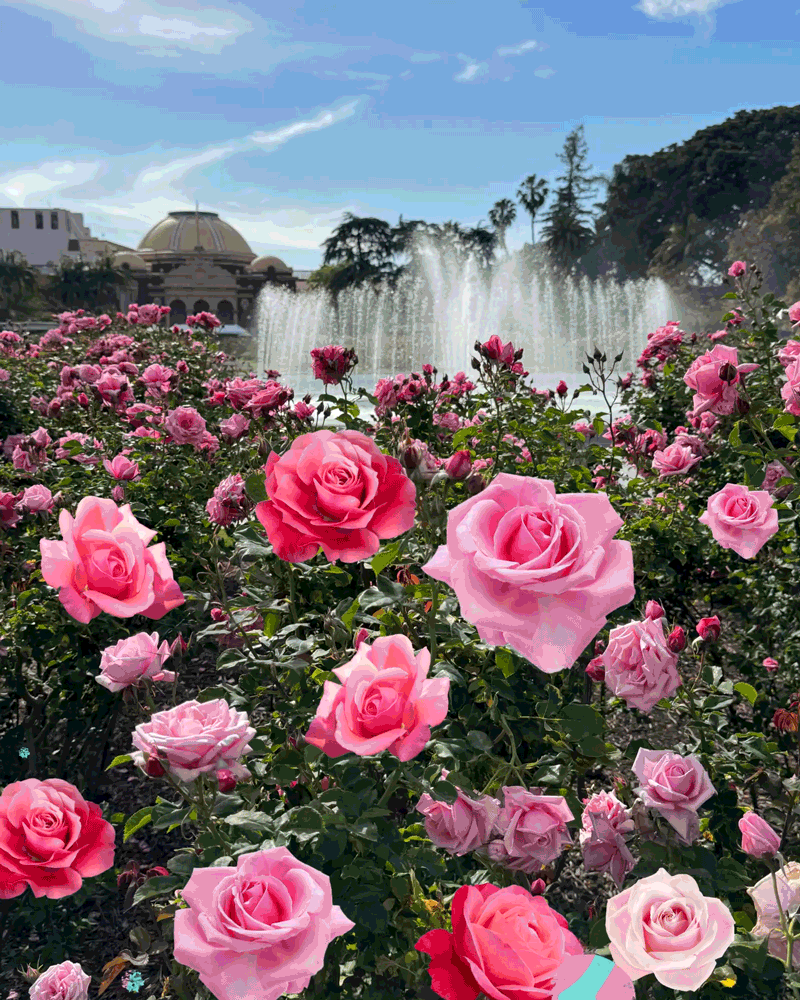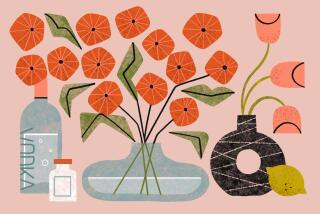All About Roses
- Share via
At this leafless, dormant time of year, why are we telling you all about roses? Because right now is the best time to buy and plant new roses. And in about a week, it will be time to prune those that are already happily growing in the garden.
If yours aren’t all that happy, perhaps watering or fertilizing habits have to change, or maybe one of the common rose pests or diseases needs to be controlled.
In a nutshell, here’s how.
Bare-Root Planting
Bare-root roses--with no soil around their roots and no leaves--are a bargain found only in January and early February. They cost about half of what they will later on, and bare-root is considered the best way to plant roses.
* If the rose is packaged, remove and check for plenty of roots. If they’re dry, soak the bare roots in a pail of water overnight.
* Dig a hole large enough to hold the roots when they are spread out in a natural fashion. Add bagged amendments to the excavated soil so it is about half amendment and half soil, then mix an organic fertilizer (such as blood and bone meal) into the bottom of the hole.
* Mound a cone of the amended soil in the bottom of the hole and spread roots over it.
* Use a long stick to make sure the rose is set at the right height--the bud union should be right at the eventual soil level.
* Fill the hole, carefully packing the soil around the roots. Use leftover soil to form a basin around the rose and fill it with water several times to soak well. Use the sawdust the rose came with, plus some of the bagged amendment, to bury most of the rose, protecting it from our hot winter sun. When the rose sprouts, wash the mound away (it makes a good mulch).
Cutting
To keep roses flowering, spent blooms must be cut off. When removing or cutting for the vase, always prune above a big five-part leaf, preferably one that faces out. The thicker the stem where you make the cut, the stronger the resulting growth.
Cuts should be one-quarter inch above the leaf, at a slight angle. Longer stubs will only encourage boring insects. A drop of white glue on large cuts prevents the entrance of rose borers.
Use bypass pruners.
Dormant Pruning
Once a year, in winter (usually after Jan. 15), roses should be pruned. Climbers, old roses and many English roses are pruned differently than described here.
* Remove all dead branches, with a small saw if necessary, and any that rub or cross.
* Remove oldest canes with gray bark and thorns, as long as three to five healthy green ones remain.
* Shorten remaining canes by about one-third.
* Prune off all weak growth and branches thinner than a pencil.
* Strip off all leaves, rake up around the rose and send leaves and litter to the dump to prevent the spread of disease.
* Spray the bare rose with a mix of dormant oil and sulfur.
CANES
Stems arising from the base of the plant are called canes on roses. Preferred are sturdy, young canes that are still green. Old canes with gray bark and thorns--that no longer produce thick healthy branches--should be removed, cut flush to the bud union with a small saw or loppers.
BUD EYE
These are where new growth comes from; they are located where leaves are attached to stems. Short, stubby branches that look like elongated buds are no longer capable of producing strong growth. Branches covered with these should be removed.
SUCKERS
Anything sprouting from below the bud union is a “sucker” and should be pulled off with a quick yank, not cut.
BASAL BREAK
Vigorous new canes sprout from the bud union or just above. Encourage these breaks by working one-half cup epsom salts into the soil around each rose after first blooms fade.
BUD UNION
Though some roses are grown on their own roots, most are budded onto the roots of another kind of rose. The swelling where bud wood and root stock meet is called the bud union. It should be right at soil level.
Watering and Fertilizing
Roses need lots of water once they begin growing in spring. They also need frequent fertilizing, at least once after every round of flowering. Lightly cultivate a balanced, complete fertilizer (such as 10-8-8) into the soil around the base before watering.
In addition, you might try giving them what some call a “rose cocktail,” maybe twice a year, cultivated into the soil surface. Give each rose a mix of:
1 cup gypsum
1 tablespoon iron sulfate
1 tablespoon epsom salts
1 tablespoon sulfur
1 tablespoon bone meal
Rose Pests
Rose slugs, a recent pest, eat small circular holes that appear tan because the veins remain. Actually, the larvae of sawflies, they are easily controlled when damage first appears in early spring. Spray with light horticultural oil (such as Sunspray); repeat in two weeks. Or use Orthene.
Aphids are seasonal, here one week, gone the next. Black peach aphids are the worst, damaging flowers. Use insecticidal soap or Orthene.
Thrips damage flowers with tunneling. Control with light horticultural oil or Orthene, spraying every seven days for five weeks, wetting the soil underneath too.
Mites are mostly a problem in late summer. Almost invisible, they are usually noticed when leaves yellow and fall. Light horticultural oil works, or use a miticide named Avid.
Rose Diseases
Powdery mildew looks like a chalky covering and distorts leaves and flower buds. Control with baking soda formula (mix a cup of water, tablespoon of Canola oil, 1 1/2 tablespoons baking soda and 1 tablespoon of insecticidal soap, adding a tablespoon of vinegar last, then add enough water to make a gallon of spray, or use Funginex (Triforine) or Fungi-gard before disease appears.
Downy mildew starts as small purplish blotches that are barely noticeable. As it progresses, leaves yellow and fall off (similar to mite damage). Control right after pruning with a mix of dormant oil and sulfur. At other times, strip off leaves or use the very expensive Subdue.
Black spot is just that, dark round spots that usually go away by summer. Control with Funginex (Triforine).
Rust looks like its namesake. Little orange bumps on the underside of leaves spread, leaves yellow and then fall off. Worst near the coast. Pick off infected leaves or use Funginex (Triforine) at the recommended strength for rust.






